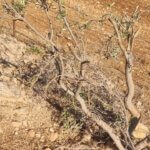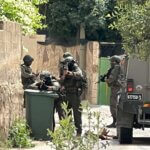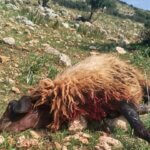Living under threat of demolition in the Jordan Valley
Wednesday, 07 December 2011 Ben Lorber for the Alternative Information Center
The threat of imminent demolition hangs over the Palestinian village of Al-Hadidiya in the Jordan Valley.
Before the Israeli occupation of the West Bank began, Al-Hadidiya, near the Jordan Valley villages of Tubas and Jiftlik, was inhabited by over 100 families. Today, only 14 families remain. Since 1967, the village has been demolished four times. In 1970, Israeli declared the area a closed military zone, despite the absence of any noticeable military activity. Since then, over 3000 dunums of agricultural land has been appropriated by the nearby settlements of Ro’i and Beqa’ot.
On November 10, the community received demolition orders for 17 structures. If Israeli forces follow through on the threats, 72 people will be affected. As lawyers struggle to postpone or annul the orders, the people of Al-Hadidiye wait in uncertainty and fear.
Abu Sakkr is a shepherd whose tents are slated for demolition. Before the first demolition of Al-Hadidiya took place in 1967, Abu Sakkr, like all other villagers, lived in a sprawling stone house.
“Do the Americans, the French or the British think that [their children] and the children in Palestine are equally valuable? Do they want to live under occupation? America was under British occupation and they didn’t like that,” Abu Sakkr remarked.
Most of Al-Hadidiya’s residents have relocated to nearby villages such as Tubas, Jiftlik, or Nablus. Others, like Abu Sacher, whose home has been demolished six times, remain on their land.
“I will not leave my home”, he said. “Even if the entire population of America comes and settles here, I will still be here.”
In June 2011, the Israeli military demolished 33 structures at Al-Hadidiya, leaving 37 residents homeless, and undermining the livelihood of another 15.
A week after the residents received the latest demolition orders, Stop the Wall spearheaded a letter-writing campaign and diplomats from 7 European representative offices visited Al Hadidiya to learn more about the residents’ plight.
As a consequence of policies designed to remove Palestinian Bedouin from Area C of the Jordan Valley, the people of Al-Hadidiya lack direct access to education, health care, electricity and water resources. Because villagers are barred from digging water wells or using the Mekorot water pipes that run under their feet, they cannot pursue their traditional agricultural lifestyle and must rear animals, a task made more difficult as more dunums of grazing land are appropriated by settlements.
Standing near his tent, his livestock Abu Sacher says that his parents were farmers who lived in a stone house. “But we have been made to live like Bedouin,” he adds.






